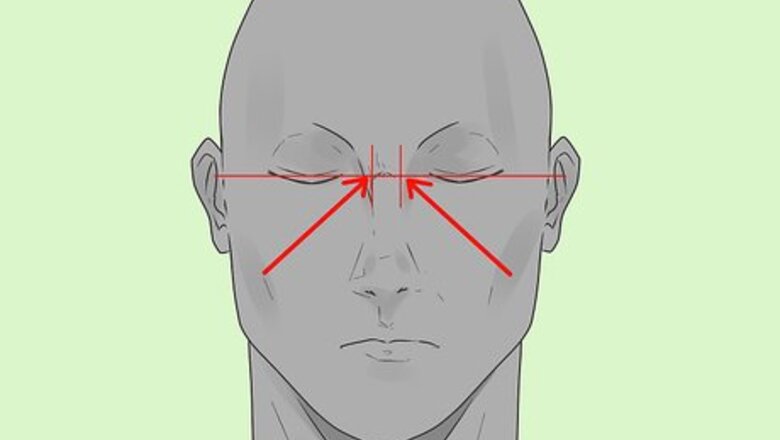
views
Measuring the Bridge of Your Nose
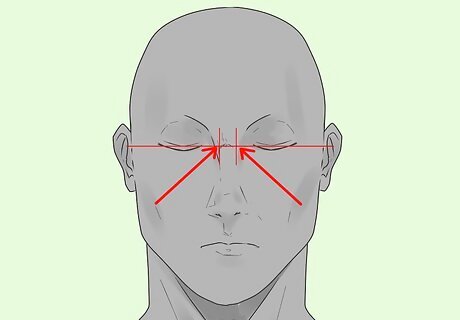
Use a mirror or photo to find the position and width of your nose bridge. Your bridge measurements will determine the distance between one lens and the other. If you are using a photo, a side profile selfie will work best. Examine your nose to determine if your bridge is high or low, and whether it is wide or narrow. If the bridge sits below your pupils, then you should look for bridges in the 16–18 millimetres (0.63–0.71 in) range. If the bridge sits above your pupils, then you should look for a bridge in the 19–21 millimetres (0.75–0.83 in) range. Judge whether your nose bridge is narrow or wide. If your eyes are close together, then your nose tends to be narrow, and if your eyes are further apart, then your nose tends to be wide. If your nose is narrow, then you want to aim for a bridge in the 14–18 millimetres (0.55–0.71 in) range, and if your nose is wide, you will want to seek bridges that are 18 millimetres (0.71 in) or higher.
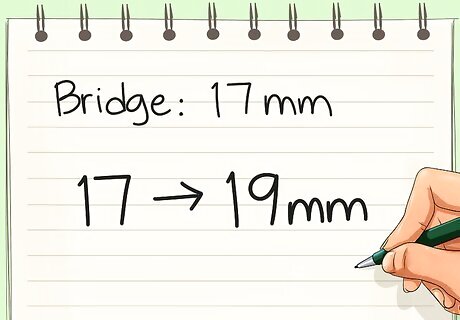
Adjust measurements based on the thickness of the frame you want. Once you have determined your bridge width and position, you need to adjust your measurements based on the thickness of the potential frame. The thicker the frame, the wider you will have to adjust the bridge width of your glasses to support the extra weight. If you have a bridge in the 16–18 millimetres (0.63–0.71 in) range, but want a thick frame, you should consider a 19 millimetres (0.75 in) bridge to account for the extra rim. Likewise, if you have a high bridge, but want thin frames, you should look for an 18 millimetres (0.71 in) (or possibly even smaller) bridge.
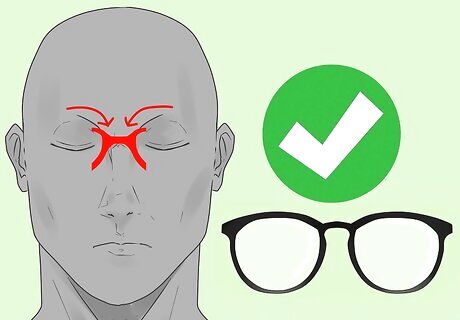
Use your bridge position to select glasses with a high or low bridge. Not only do glasses vary in bridge width, they also come with different bridge positions. If you determined you have a high bridge, aim for glasses with a bridge at brow level. If you have a low bridge, you should seek glasses whose bridge dips below the brow.
Measuring the Width Between Your Temples
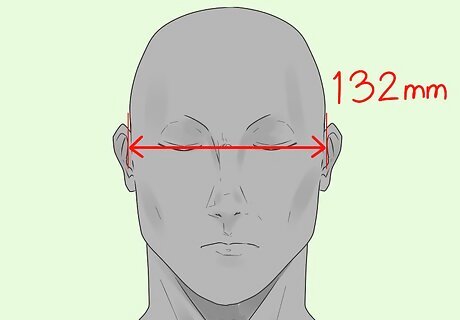
Measure your temple-to-temple width using a mirror and ruler. Hold the ruler horizontally across your face and below your eyes. Measure the distance between left and right temples. Record the measurement in millimeters.
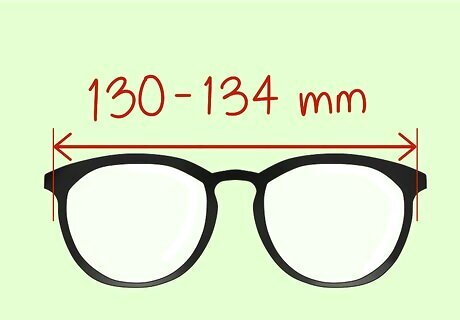
Use your temple-to-temple width to find the total width of your glasses. The total width of your glasses (both lens frames + bridge) should correspond as closely as possible to your temple-to-temple measurement. For example, if your temple-to-temple width was 132 millimetres (5.2 in), then you should look for a pair of glasses with a width in the 130–134 millimetres (5.1–5.3 in) range.
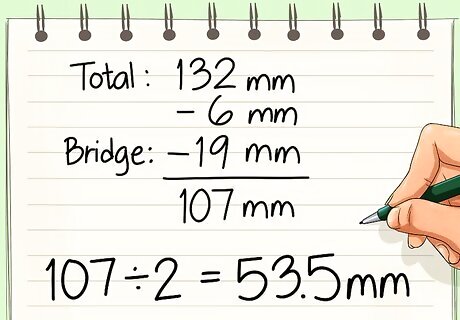
Calculate your lens width using nose width and total width. Knowing the total width can also help you determine the proper lens width. Subtract 6 millimetres (0.24 in) and your bridge width from the total width and this will give you your lens width. Lenses typically range between 50–60 millimetres (2.0–2.4 in).
Determining Temple Length and Face Shape
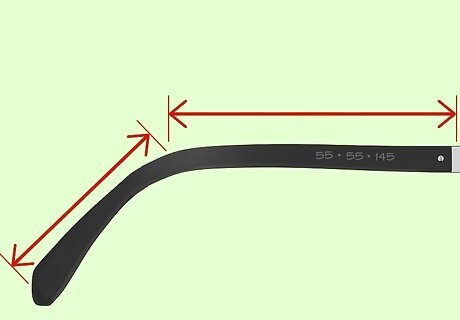
Use your total width to determine temple length. The arms or temples of your glasses are the two pieces that attach to your frames and rest on your ears. While temples can range between 120–150 millimetres (4.7–5.9 in), they typically come in three preset sizes: 135, 140, and 145 mm. The wider your total width, the larger your temples need to be. If your total width was on the higher end you will want to opt for 145 millimetres (5.7 in) temples, or possibly more. If your total width was on the smaller side, then you should opt for the 135–140 millimetres (5.3–5.5 in) temples. If you try a pair of glasses on, and the temple sticks out past your ear, you should look for a pair with smaller temples as this will cause discomfort.
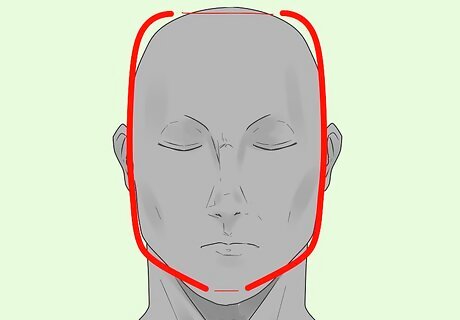
Determine if your face shape is circle, square, oval, or heart shaped. Pull your hair back and look straight in the mirror. Trace the outline of your face from hairline to cheekbone to jaw. Decide if the shape most closely resembles a circle, a square, an oval, or a heart. Circle-shaped faces have full cheeks, and the forehead and jaw have a similar width. Square-shaped faces have strong jawlines, as well as a forehead and jaw that are similar in width. Oval-shaped faces have a narrow jawline and narrow cheekbones. Heart-shaped faces have large foreheads and narrow jawlines.
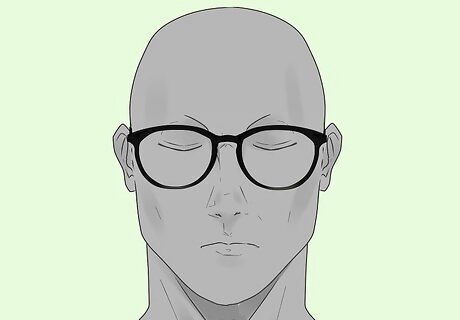
Match face shape to ideal lens shape. Circle-shaped, oval-shaped and heart-shaped faces tend to look better with boxier frames. Square faces match well with circular or oval frames.











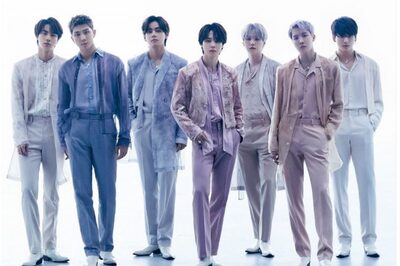






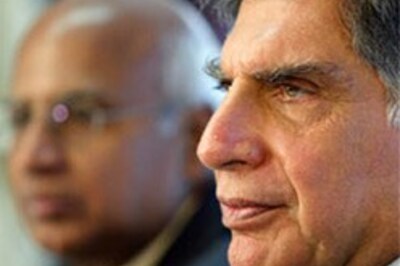

Comments
0 comment